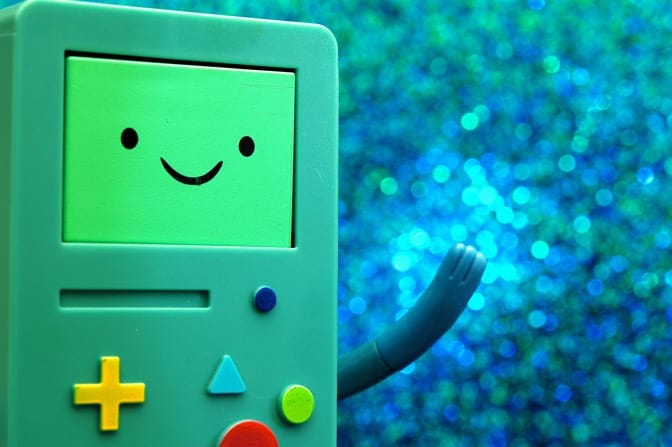Great, fast, amazing, and excellent are all adjectives we love to hear about our IT service desk people and the service they provide via IT service management (ITSM). However, the challenge in recognizing truly “great” individuals or teams is that performance is subjective, typically measured through surveys, appraisals, and opinions. Gamification on the other hand enables a new set of internal benchmarking metrics which create a more objective understanding of individual and team performance that ultimately helps you to improve the performance of your IT organization.
The intersection of human and digital
I’ve recently been speaking about the need for IT executives to have a digital strategy that focuses on improving organizational ability and agility. As frankly, one aspect of digital performance the IT industry has not spoken about is the intersection of human and digital. Particularly the need to build real-time feedback for, and engagement with, the users of the technology employed to enhance productivity. We not only need to find ways to benchmark our systems performance, but also our human performance. Gamification can help.
“Modern technology has become a total phenomenon for civilization, the defining force of a new social order in which efficiency is no longer an option but a necessity imposed on all human activity.”
– Jacques Ellul (Author: The Technology Society 1967)
Driving human behavior
Gamification is not a new concept, but its application in the modern enterprise is still emerging. I personally was not a fan, thinking that it demeaned the professionalism of the knowledge worker.
However, after seeing gamification in practice, I quickly realized the benefits. The reality is that all around us there are little motivators to try and get us to exhibit a certain behavior:
- With airlines and hotels, the behavior is LOYALTY
- The motivation for social media is TIME
- The motivation for crowdsourcing apps is KNOWLEDGE
- The motivation for wearables is RESULTS.
We can provide training on gamification policy and procedures to try to get our service desk analysts to improve their performance and the way they operate. Frequently though, they don’t understand WHY they have to perform certain activities. Thus these extra steps, or processes, simply become a burden to them.
However, for those who have worked in a well-managed organization where there is clarity of purpose and intention in process, we enjoy the working environment because we see the short and long-term benefits of what we do. But creating this culture can be difficult, even though keeping this cultural alignment to business value is key to maintaining high performing organizations.
So how can we motivate our employees, and increase our understanding of internal performance, using gamification?
Understanding human motivation
Emotional sources of motivation are powerful, and they are best conveyed informally in an organization through the respect of peers, the admiration of subordinates, the approval of one’s personal network and community, and the like. However, money often becomes the default motivator because it is measurable and tangible — and trouble strikes when the prospect of a lot of money becomes the primary goal. Usually feeding a very self-serving emotion – greed.
Recent studies by David Rock, an executive coach, and Jeffry Schwartz, a neuroscientist, have identified several motivators that influence behavior more effectively than money. For one, people want to elevate their status. Organizations often assume that the only way to raise an employee’s status is by a promotion, but status can be enhanced in many less costly ways. The perception of status increases significantly whenever people are given credible informal praise for daily tasks rather than waiting for annual results. Gamification does this.
David Rock and Jeffrey Schwartz’s research into how breakthroughs can be applied to make organizational transformation succeed show that:
“Behaviorism does not work—the carrot and the stick (rewards and punishments) approach may work for a short time but it does not yield the intrinsic motivation that creates innovation and long term sustainable results. The carrot raises the anxiety level for non-performers (creates Critter State), while people who are already performing are not stretched. The stick focuses attention on behaviors that don’t work and on the situations that preceded them.”
Source: Forbes
For these very reasons, gamification can be a solid solution.
So what is gamification, and how can we apply it?
Gaming is not an unhealthy competition. It is not rivalry. It is imperative then that those who are not ranking on the leaderboard are recognized for performance the game may not measure; otherwise it will undermine the validity, integrity, and seriousness of the program.
Gamification is also not a money tree. If awards are setup strictly for financial benefit, it will undermine the nature of the game itself. While financial awards can be given, it has to be something that is earned because of the achievements within the game.
When gamification is done right, it can provide tremendous benefits for team performance. It provides insights into how your team behaves and an instant opportunity for corrective action.
How to set up gamification for your service desk
The ten key steps are:
- Define the game objectives
- Identify the behaviors that need to be change
- Determine which players will be involved – players and supporters
- Set the rules, levels, challenges, and dynamics
- Enable the teams – create videos, quizzes, and flash cards on the behaviors wanted
- Energize – create a buzz, get players excited, and create energy from outside teams
- Establish a specific launch date to rally around
- Keep the momentum going
- Celebrate performers, also watch for those gaming the game (through loopholes)
- Find new ways to earn points, include other players, increase participants, and offer new badges and awards.
So what would gamification look like in action?
Let’s take an example of wanting to improve the value of first-tier responders and enabling them to resolve more issues at the first tier using gamification. Now let’s walk through the steps.
- Set Goals – increase first tier resolution by 15% in 2016
- Enable gamification teams – establish training on expected behaviors
- How to create KBAs
- How to search KBAs
- How to attach KBAs
- How to monitor call wait time
- When to escalate
- Design the game – set rules, points, etc.
- Close without escalation +5pts
- Creating knowledge base articles (KBAs) +5pts
- When KBA is used +2pts
- Attaching KBA +2pts
- Increasing call time -2pts
- Decreasing quality -2pts
- Determine gamification players
- Service desk analysts
- Tier 2 support teams
- KPIs – Requests/incidents closed without escalation
- Quality maintained within 5%
- Response time maintained within 5%
- Energize, create a communication plan
- Set launch Date
- Set training dates
- Put up posters
- Give it a fun name
- Email blast plan from the highest-ranking executive appropriate
- Establish visual monitor of leaderboard (or landing page)
- Launch gamification
- Turn on tracking
- Expose leaderboard
- Promote players – encourage player performance (encouragement from management)
- Check gamification behaviors
- Monitor results of KPIs
- Benchmark current vs. past performance of KPIs
- Provide additional training where needed
- Increase scope
- Bring players from Tier 3 support and management on board
- Set new KPIs and improve game design
Some final gamification tips
Here are few key tips for making the most of your gamification program:
- Legitimize the gamification program
- Formalize the merit badges
- Actively communicate the improvements
- Automate the tracking
- Audit activities to increase rankings
- Instantly update measurements
- Maintain gamification frequency and excitement
- Make it real-time and trusted
- Create healthy competition
If you want to hear all this and more on gamification from the horse’s mouth, there’s an SDI gamification webinar for that.
Image Credit
Matthew Hooper
Matthew Hooper is a seasoned professional with over 20 years experience in IT and over 10 years in marketing. Currently the Director of ITSM, DevOps, and ITAM Sales - Americass for Ivanti, Matt is well known in the ITSM, ITIL, Project Management and Governance industry for his prolific blogging, video series, and award winning speaking events.

